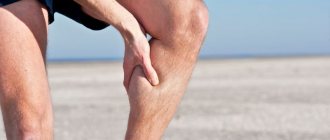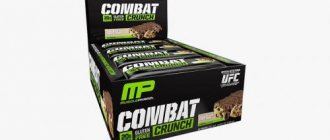Aerobic training is the performance of physical exercises, the main goal of which is to strengthen the cardiovascular system, develop endurance and burn fat.
During aerobic training, in addition to energy, muscles also require a fairly large amount of oxygen, which forces the lungs, heart and blood vessels to work much more intensely.
Aerobic workouts include running, brisk walking, swimming, cycling, jumping rope, dancing and so on. They also include all kinds of team sports, such as football, basketball, volleyball, tennis and others.
In this article we will talk about what aerobic training gives us, how to do it correctly and how to get the best results from doing it, and we will also touch on the topic of comparing aerobic and strength training.
What does aerobic training give us?
Regular aerobic training has many advantages, both physically and emotionally.
- Strengthening the heart muscle. Increasing the efficiency of its work, as well as reducing the heart rate at rest.
- Improves blood circulation and lowers blood pressure.
- Strengthening respiratory and skeletal muscles.
- Active development of body endurance.
- Losing excess weight.
- After 2-3 weeks of training, there is an improvement in mood and relief from depression.
- The quality of sleep improves, it becomes healthier and deeper, which contributes to the high-quality recovery of the body after training. A person begins to fall asleep much faster.
- The problem of lethargy, which worries many people, disappears. Regular exercise keeps you alert throughout the day.
Also, an undeniable advantage of aerobic training is that, due to the increased speed of blood circulation, it increases a person’s life expectancy and makes it possible to look younger than one’s age. Aerobic training is an excellent prevention of most diseases, especially cardiovascular diseases.
Features of anaerobic load
These are frequent and short-term loads with the highest possible intensity of muscle work. When performing such exercises, the body lacks oxygen, which significantly increases the amount of energy consumed. Training is performed at high intensity, in several short approaches. These types of exercises include:
1) sprint running
2) intense cycling
3) powerlifting
4) bodybuilding
5) all types of strength training
6) training on simulators
Among other things, all types of training are replaced by short breaks, allowing the body to compensate for the lack of O2. These exercises allow you to lose weight, build muscle, and achieve ideal body contour as quickly as possible. It should be remembered that overloading the body is harmful to health, which can contribute to a deterioration in the performance of the respiratory and cardiovascular systems. In this regard, anaerobic exercise must be carried out under the close attention of a trainer.
How should you do aerobic exercise?
You probably knew about the benefits you read above even without this article. But not everyone knows how to perform such workouts so that they bring maximum results, and therefore, for most people, doing, say, jogging in the morning does not bring the desired results.
In the world of sports, each exercise has its own goal and in order to achieve it, you need to know how to do it correctly. Aerobic exercise is no exception.
Most people who start aerobics have the goal of losing weight or developing endurance. These, in principle, are the main goals of such training, the rest comes as a pleasant addition. So, to lose weight, it will not be enough to do a morning or evening jog lasting 10-15 minutes. Let's explain why.
To perform certain loads, the body needs energy, this is logical. And it would be good if it draws energy from fat deposits on our body. But, unfortunately, it consumes this energy mainly from carbohydrate reserves. This is how nature works and nothing can be done about it. However, when the supply of carbohydrates runs out, the body has no choice but to spend its own energy reserves - fats. This is exactly what we need.
When performing aerobic exercise, carbohydrate reserves are depleted within approximately 20-30 minutes. Thus, fat loss begins only after this time. Of course, we burn some fat reserves during these 20-30 minutes, but these losses are very insignificant. The optimal duration of aerobic training will be 40-45 minutes, no more, otherwise you will begin to lose muscle along with fat.
Aerobic training should be performed 3-5 times a week - this will give excellent results. If you are a beginner, you should start with 3 times a week for 15-20 minutes. This will prepare your body for further stress. Gradually, the duration of training should be increased, but not earlier than after 2 weeks.
Both beginners and experienced athletes should definitely warm up before training. It will warm up the muscles and prepare the body for exercise. Warming up also reduces the likelihood of all kinds of injuries. After finishing your workout, do not rush to sit down or stop; before doing this, you should walk around for a couple of minutes and restore your breathing.
As mentioned above, aerobic training involves a variety of exercises and activities, each of which burns a different amount of calories. Below is a table with the approximate number of calories burned per 1 minute of exercise.
How to practice at home: 5 sets of exercises
If none of the sports listed above captivates you, do not be discouraged: the aerobic exercise necessary for burning fat can be obtained without leaving your apartment. The only advice is to use a heart rate monitor (the frequency of arterial oscillations should not go beyond 185% of normal). The training complexes are designed for trained athletes, and beginners will only need to spend 10 minutes on each exercise.
Complex I (each part is divided into 3-4 sets of 5 minutes):
- Jumping rope: 15-20 minutes at an intense pace.
- Running in place: 15-20 minutes at an intense pace, can be done on a treadmill.
- Abdominal exercises with twisting (the torso tilt should be maximum, you can ask your loved ones to hold your legs): 15-20 minutes at an intense pace.
Complex II (each part is divided into 3-4 approaches of 5 minutes):
- Frog jumping: 15-20 minutes at an intense pace.
- Running from the “low start” position (quick change of supporting legs in the “start” position): 15-20 minutes.
- Pulling your knees to your chest from a hanging position: 15-20 minutes at an intense pace.
Complex III (each part is divided into 3-4 sets of 5 minutes):
- Jumping over an obstacle (bench, twisted mat) 40-50 cm high: 15-20 minutes at an intense pace.
- Side step running: 15-20 minutes at an intense pace.
- Deep squats (can be done with weights): 15-20 minutes at an intense pace.
Complex IV: (each part is divided into 3-4 sets of 5 minutes)
- Jumping on a mini-trampoline: 15-20 minutes at an intense pace.
- Race walking: 15-20 minutes at an intense pace.
- Burpees (for beginners, deep emphasis on the palms is optional): 15-20 minutes at an intense pace.
Complex IV: (each part is divided into 3-4 sets of 5 minutes)
- Jumping on a platform (you can jump from a deep squat onto a step, bench or podium): 15-20 minutes at an intense pace.
- Running with maximum knee elevation: 15-20 minutes at an intense pace.
- Alternately pulling your knees to your chest from the plank position: 15-20 minutes at an intense pace.
*Although aerobic exercise is beneficial for most people, there are contraindications to weight loss exercise:
- joint diseases (only walking with ski poles is allowed);
- varicose veins and thrombosis;
- chronic and acute respiratory diseases (including asthma and acute respiratory infections);
- hypertensive heart disease;
- strokes and heart attacks, as well as pre-stroke and pre-infarction conditions;
- pregnancy and lactation;
- chronic diseases of the gallbladder, kidneys and liver (including kidney stones).
Combining aerobic and strength training
In the world of bodybuilding, there is an opinion that combining aerobic and strength training is a big mistake. However, back in the late 70s, it was found that the proper combination of these workouts gives excellent results, especially in order to give muscles relief and lose excess weight.
As mentioned above, muscles need energy to overcome certain loads. The loads in strength training are very large, which means they consume a lot of energy, that is, carbohydrates.
Thus, if you conduct an aerobic workout after a heavy workout, then the reserves of carbohydrates will already be depleted and the body will spend energy from its reserves, that is, from fats, to perform aerobic exercise. This will significantly improve and speed up the result.
A huge mistake would be to do aerobic training before strength training. When we make this mistake, we start lifting weights without having the energy to do so. This will only entail strength training with very light weights, which will not be enough to increase muscle mass or strength.
The myth that aerobic exercise destroys muscle mass is not entirely a myth, but it is also not entirely true. Yes, if you really do marathon races, this will entail loss of both fat and muscle, but if you do aerobic training no more than 3 times a week lasting 15-20 minutes after strength training or 40-45 minutes of independent training, then this will only be beneficial and won't steal an ounce of your muscle.
When incorporating aerobic training into your program, it is highly recommended to increase your protein intake to 2 grams per kilogram of body weight. In other words, if you weigh 70 kg, then your daily protein intake will be 140 grams.
This can easily be achieved by drinking protein shakes or increasing your intake of protein-containing foods such as meat, fish, poultry, eggs and dairy products. But remember the fat content is also present in them and it is much higher than in protein powders.
Nutrition and aerobic exercise to burn fat
As we noted above, mealtime and diet are of great importance for those who engage in aerobics. In addition to the ban on simple carbohydrates an hour before and an hour after training, there are other recommendations.
- Record meal times. Try to organize your day so that breakfast, lunch, dinner and other meals always occur as scheduled. Choose the most comfortable time for eating, when nothing will distract you from absorbing nutrients, and follow the same schedule on weekdays, holidays and weekends.
- Eat more often. Small meals (every 2-3 hours) in combination with aerobic exercise promote weight loss, which is especially important for those who cannot tolerate starvation diets. It is recommended to divide the daily diet (for example, the classic 2000 kilocalories) into 5 or 6 meals of 300-400 kcal. In the future, daily caloric intake can be gradually reduced by 200-250 units per month, while maintaining the daily routine. As a result, the amount of food consumed can be reduced unnoticed by the body, since in 2-3 hours the insulin level does not have time to drop to a critical level.
- Drink more. Unsalted artesian water is the basis of a fat-burning diet. Lipids leave the body through sweat, so fluid must enter the body in sufficient quantities. Using Greenportal's principle of simplicity, you can drink 2.5 liters of water daily. This universal figure was calculated by advanced scientists from the IOM (US Institute of Medicine) in 1945.
- Avoid eating too early and too late. Some researchers argue that you should definitely have breakfast at 7.10, lunch at 12.40, etc., but it’s easy to argue with these recommendations, because the human biological clock has little connection with astronomical time. We recommend drinking a glass of water in the morning on an empty stomach, and having breakfast 30-60 minutes after waking up, when the body is ready to accept food. Dinner (that is, the last meal), contrary to the statement about the dangers of eating after 18.00, is better to have 2 or 3 hours before bedtime, so that the feeling of hunger does not interfere with a good night's rest.
- Maintain BJU balance. A protein diet, which is often recommended for those losing weight, can only be used as a temporary measure during the period of active fight against fat. To gradually lose weight, it is recommended to combine regular aerobic exercise with as nutritious a diet as possible. The optimal proportion of proteins, fats and carbohydrates is 4:2:4.
The Greenportal team wishes you health and strong muscles!
How to increase the effectiveness of aerobic training?
Below are a few simple tips that will help make your aerobic workouts even more effective.
- Avoid eating foods high in carbohydrates before training. This food can be eaten three hours before training, not earlier.
- Do aerobic exercise outdoors. After all, let’s say running in the fresh air will give better results than running on a treadmill in a stuffy gym.
- The level of stress on the body must be average, otherwise aerobic training will turn into anaerobic.
- Eat enough protein.
- Combine aerobic exercise with strength training (first strength training, then aerobic exercise)
- Train regularly, namely 3-5 times a week.
Types of Aerobic Exercise
Depending on the conditions and your capabilities, certain aerobic exercises can be used using special exercise machines /devices or even with your own weight, which effectively burn fat, help you lose weight and increase aerobic endurance .
In a gym/gym environment
- Treadmill
- Exercise bike
- Stepper
- Ellipsoid
- Stepping onto the platform
- Jumping rope
- Running in circles
- Football/basketball/volleyball and other outdoor games
Aerobic exercise on an elliptical in the gym
At home
- Jumping from a low squat to the top
- Running in place/with high shin/knee raises
- Emphasis crouched – emphasis lying down
- Jumping lunges
- Torso raises
- Walking up the stairs
- Push ups
- Jumping over a bench/bench
- Plank
Push-ups at home
In street and water conditions
- Swimming
- Water aerobics
- Cross country/stadium/street running
- Running with acceleration
- Walking in a half squat
- A ride on the bicycle
- Skiing
- Roller skating/skating
Cycling as an aerobic exercise on the street
Some exercises can be done both on the street, in the gym, and at home , showing a little imagination, freeing the room from objects that may interfere with performing this or that exercise.
Aerobic and anaerobic exercise - principles of metabolism
Let's discard the abstruse formulations. Let's look at aerobic and anaerobic exercise through the eyes of an athlete.
It is an established fact that physical activity speeds up metabolism. Let's find out how this happens.
Let's skip the story of how carbohydrates turn into simple sugars. Chemistry fans can follow the link.
Let's leave carbohydrates the right to be called carbohydrates and move on.
Metabolism of the body through the eyes of an athlete
Metabolism is the metabolism of substances in the body. Physical exercise stimulates metabolic processes. Muscles need “gasoline” and the body speeds up metabolism.
Food products are derivatives of the ATP molecule. Metabolism “breaks down” food into molecules and produces “fuel”.
Carbohydrates are burned first, then fats. Only in extreme cases is the ATP molecule produced from proteins.
To obtain energy, the body synthesizes and “burns” ATP molecules continuously. The higher the physical activity, the more fuel you need.
Our body has two gas tanks - glycogen and fat tissue.
In the topic “Living and Dead Calories,” we already talked about how the body uses carbohydrates and fats. Let's develop the question and look at it with an example.
You ate three pieces of chocolate. Chocolate is carbohydrates. One piece of chocolate will “burn” immediately. While you are walking around the apartment, washing your face, getting dressed. This is minimal physical activity.
The body converts the rest of the chocolate to create energy reserves. Metabolism will “pack” the second lobe into glycogen. The third slice (and the entire chocolate bar) will be sent to adipose tissue for preservation.
The body stores glycogen in the muscles and liver. This is gas tank number 1 - a source of fast energy. When the muscles begin to work intensively, the body will refuel from this tank. Metabolism will “unpack” glycogen and create an ATP molecule.
Adipose tissue is gas tank No. 2. Fat is the main source of energy for any living creature. Homo sapiens is no exception.
The body constantly increases its reserves of adipose tissue. Sends unused fats and carbohydrates there. Creates reserves in case of hunger or prolonged stress. Let's run a cross-country race, the body will “refuel” from this tank.
Fine. We sorted out the gas station and filled the tanks. Now let's see where the "gasoline" goes. Let's find out how the body uses reserves.
Aerobic and anaerobic exercise are two systems for providing energy during exercise. They can proceed in parallel or independently of each other. The fundamental difference is as follows.
Aerobic exercise synthesizes ATP from carbohydrates and fats, anaerobic exercise only from carbohydrates.
Cardio or aerobic exercise - main directions
Combination with strength training
For optimal weight loss, you need to combine aerobic exercises at home with strength training: this will help not only get rid of the layer of subcutaneous fat, but also create a beautiful muscle relief that will become noticeable.
Basic dumbbell (kettlebell) exercises will force your body to work and burn much more calories than crunches, crosses and others, since these exercises will burn more energy with each repetition, and the workouts will last longer.
For most people losing weight, 30-45 minutes is enough to get the most out of the session. By choosing a set of weights or dumbbells that suit your level of training, in 20 minutes of training you can burn the amount of calories comparable to running 1.5 km.
Circuit training
In our version, this will be a training scheme that combines cardio exercises for weight loss at home with strength training and alternating them to ensure highly effective training. The loads alternate one after another with minimal rest between them.
The circuit training method is so flexible that you can independently come up with an individual scheme for your own goals, based on the recommendations of the ACE (American Council on Exercise) trainers described in this article.
Plyometrics
If you haven't tried plyometrics yet, be prepared to push yourself intensely through simple movements. Plyometrics – explosive jumps of different types:
- in height with knees raised;
- “Jumping Jack” (arms-legs-together-apart with clapping overhead);
- jumping on one leg;
- jumping using obstacles.
They are included in training to increase speed, strength and agility because the process involves a rapid lengthening of the muscle, a slight static hold without movement, and then an explosive shortening of the muscle that allows for maximum force and trains the endurance and power of entire muscle groups.
It must be taken into account that the body quickly adapts to complex training, so you need to change load levels more often, increasing them.
Ladder
Walking and other movements performed on stairs fall under the “best cardio exercises for burning fat” category. In addition, they help improve cardiovascular endurance and strengthen muscle tone in the lower body.
They are a little tiring for beginners, but if you show persistence, your workday productivity will soon improve, the number and ease of solving problems will increase, and you won’t feel exhausted.
Exercises on the stairs are a great cardio workout for home and gym. It can be included in an interval program or as a component of any circuit.
Swimming
In freestyle (breaststroke or butterfly), training on the water helps you burn up to 350 kcal in half an hour. But this figure applies to those who strictly adhere to style techniques! A leisurely swim over the same period of time will help you get rid of 200-250 kcal. If you extend the workout for another half hour, you can get an excellent result, burning from 400 to 700 kcal!
This cardio exercise is also available in winter. A low load during the swim allows you to train for as long as possible without excessive muscle tension. In this case, the breathing technique is worked out better than in yoga. Swimming not only helps improve your body lines, but also improves your mood.
Cycling outdoors
Compared to exercise on a stationary bike, aerobic training in the form of cycling in open spaces is much more beneficial for physical fitness. It allows you to arbitrarily complicate routes, their length, and landscape. The number of calories burned by cycling depends on the speed of the ride and the difficulty of the chosen route.
In winter, intense exercise on an exercise bike will help you burn hundreds of calories and strengthen your bones. Interval training will strengthen your lower back, hips, calves, and core muscles. Riding a bike at speed:
- 15-16 km/h at a moderate pace burns 375 kcal per hour;
- 19.3-22.4 km/h – up to 750 kcal;
- Above 32.3 km/h – 1118 kcal.
Although this fitness program has little impact on the upper body, it does an excellent job of strengthening the muscle tone of the lower extremities and lower back.
Jumping rope
When asking what exercises are considered cardio, we must not forget about a simple and effective way to perform a miracle in positively changing the weight of those losing weight. Moreover, jumping rope or jumping rope works the muscles throughout the body and helps improve eye-hand coordination. At a moderate intensity of jumping, about 935 kcal are lost within an hour.
Having mastered the basics of simple straight jumps, you can use more complex patterns: lateral jumps, jumps with increasing speed, cross-mode (circuit training).
Jogging
Included in almost every set of cardio exercises for girls, jogging is an ideal way to work out all parts of your body and burn unnecessary calories.
To achieve maximum effect, you need to gradually approach a speed of at least 12.8-13 km/h. You can complicate the task by using weights, any additional resistance to movement (rough terrain, inclined slides, hills or stairs).
Tennis
A fun game that helps you burn excess calories while improving your speed and reaction power. Continuous movement on the court for an hour helps burn up to 600-900 kcal from the fat depot.
Tourism
A great way to get active while squeezing the sweat out of those losing weight! Walking not only improves muscle tone and definition, but also reduces anxiety and depression, keeps your weight healthy and your joints strong and well-lubricated.
Zumba
The high pace of aerobic activity combined with interval training in this dance helps burn the maximum number of calories.
Depending on various factors: body weight, gender of the person losing weight, level of physical fitness and other indicators, this figure ranges from 400 to 600 kcal per hour!
Crossfit
According to international CrossFit trainer Denis Thomas, this training is a functional variety of movements that are performed with high intensity.
CrossFit is a great way to get faster and stronger and lose excess weight. It affects every part of the body, increasing the overall fitness of the body.
Kickboxing
Powerful training that relieves stress, increases spinal flexibility, and teaches body control and protection. Combining karate with boxing strikes, kickboxing takes the best of both systems to give the upper and lower body a supercharged workout. It burns about 750 kcal per hour and trains all muscles.
He is called a leader in the development of the cardiovascular system. It has a much better effect on it than running, cycling, and other aerobic exercises. During the impact, the entire body tenses, along with all the major muscles. Thus, in terms of the number of calories burned, it leaves jogging and daily workouts far behind. At the same time, it is much more interesting with its numerous moves than monotonous movements for an hour.
A few rounds in the ring like Rocky will help train the entire body while moving, blocking, or throwing punches. This load constantly shifts the emphasis from cardio to strength training, training endurance and strengthening muscles.
Basketball
In this game it is easy to improve your flexibility, increase endurance, and strengthen your cardiovascular and respiratory systems. Changing directions quickly throughout the game helps tone muscles and burn calories. On average, an hour-long game of basketball eliminates 600-900 kcal.
And there is no need to wait for summer, since in any weather in the gym you can burn more than 600 kcal per hour while participating in a friendly game. If there is no whole team, then one partner is enough to improve your endurance, balance and coordination.
Football
An indoor soccer field or an outdoor game is equally taxing on your legs and makes you work up a sweat. Among the advantages of football:
- Crazy cardio.
- Partial body work during each pass with the ball.
- Direct and side impacts.
Football improves oxygen absorption by muscles, the condition of the heart and blood vessels, and regulates balance.
Game "Dodgeball" (or "Dodgeball")
The dynamic movements in the game, designed for a group of friends, provide a good cardio workout due to a wide range of amplitudes and directions. And after several energetic sessions of the game, you can find positive changes in your figure.
The game is quite common, the rules can be easily found on the Internet.
Martial arts
They expand the possibilities of cardio exercises and help them become much more energetic. The concept of “martial arts” includes a wide range of disciplines: boxing and karate, taekwondo and tai chi. Thanks to the music, calories are lost during the stroke in a pleasant atmosphere.
Combining martial techniques with slow movements and deep breathing practices, tai chi is a simple, low-impact exercise. According to ancient Chinese philosophy (where it comes from), tai chi helps restore the yin-yang balance, calming the body, finding the “golden mean.” At the same time, the functioning of the heart and blood vessels improves, stress and anxiety decrease, and mental balance is restored.
It is better to start practicing martial arts in sports centers, and then act at your own discretion.
Basic power yoga
In comfortable conditions, asanas strengthen the cardiovascular system. But they need to be done at a fairly intense pace.
Basic yoga strength exercises strengthen the back and abdomen, and tone the pelvis and hips. They not only increase strength and endurance, but also improve concentration and reduce the negative effects of stress.
Zen yoga
Apart from relaxing the body, yoga improves the strength and flexibility of the spine through various asanas. It's also ideal for cross-training at a higher intensity level similar to running.
From the dynamic Vinyasa technique to Bikram yoga (which is performed in a room heated to 37-40 degrees), there are a variety of styles to suit the needs of even the discerning student.
Belly dance
His technique can be mastered by anyone. This fun and sexy way to keep your body in shape not only increases sensuality, but also improves your figure, helps you actively lose weight and burn huge amounts of calories.
Ballet
Dance steps are popular again today: ballet movements combine elements of yoga and Pilates. Lengthening and contracting muscles trains them and improves tone.
While in a ballet studio movements involve the body weight and the railing (barre), using even complex loads, at home you can practice them using the back of a chair or armchair as a support.
Pilates
It helps strengthen muscles throughout the body, including deep ones. Any movement can be improved by matching it to your individual fitness level.
They are designed to strengthen the body (with emphasis on the core and lower back) and help improve balance.
Training using your own body weight
For such cardio exercises, you don’t have to go outside and you don’t have to go to the gym. Many bodyweight resistance exercises are guaranteed to increase endurance and strength.
A 30-minute workout in combination with high-intensity aerobic exercise is enough to get an optimal load on the heart and muscles in the form of body resistance without the use of weights or exercise equipment.
Climbing wall or wall climbing
Rock climbing is an unconventional workout; it helps to diversify sports activities and realize desires.
At the climbing wall you can not only increase your physical strength, but also master a whole range of different routes that can increase your heart rate and burn up to 650 kcal in an hour! At the same time, the load works for the muscles of the arms, activates the muscles of the legs, shoulders and back. In addition, when you reach the top, rock climbing is an incredible pleasure!
Jumping on a trampoline
This game, beloved by many since childhood, allows you to get an aerobic workout equivalent to running 1.5 km in 6 minutes of jumping on a trampoline! At the same time, thanks to the ease of movement and protection of joints from injury (due to the shock absorption of the trampoline), even a child can jump on it!
Skating
The activity, accessible to children and adults, can take place both outdoors and indoors. It strengthens the tone of the muscles of the legs, core, buttocks, trains both large and smaller stabilizing muscles, which are responsible for body balance and coordination of movements.
Even a moderate speed of skating helps burn about 500 kcal, not counting the additional jumps and spins.
Army method: fell and did push-ups
These movements are performed 10 times at high intensity to get a good cardio workout and train the muscles throughout the body.
Rowing machine
Each swing on such a sports equipment tones the abs, legs and muscles of the whole body. Even if a person sits without moving, they continue to work, and the heart rate increases.
Rowing session is the leader in burning calories! You can burn more than 1200 kcal in an hour! At the same time, the level of intensity of the loads is easily adjusted by changing the resistance force when you pull or push the oar.
What are the most accessible endurance workouts?
First of all, this is walking and running, which do not require a lot of special equipment. We use long running, interval running, tempo running.
“If the workout lasts an hour and a half, we can do it at a slightly higher pace, expending more energy,” explains Daniil Lobakin, candidate master of sports, PRO expert Sportmaster PRO. - If you are just starting out, long runs with a gradual increase will be enough for the first lessons. Focus not on mileage, but on time: if at a calm pace the usual load regime is an hour and a half, then endurance training can last up to two hours.” Then start increasing your speed to increase your endurance. Gradually add interval loads, for example, run 400 meters at an acceleration, 400 meters at a normal pace. In interval work, you can focus on both distance and time.











